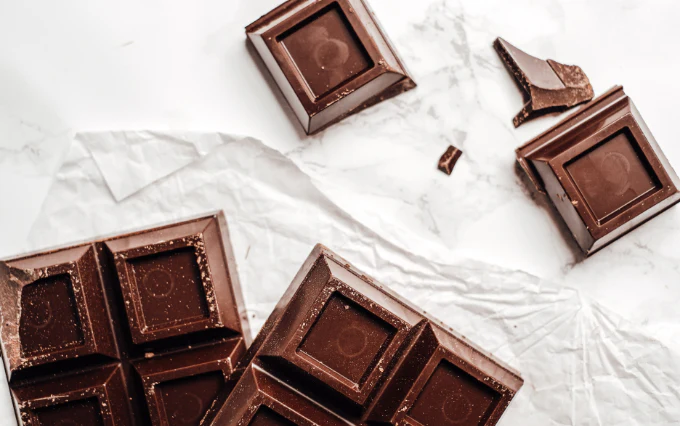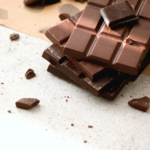Chocolate! It’s a treat that’s loved by people all over the world. But did you know there’s more to chocolate than just its delicious taste? Dive into 10 fascinating facts about this sweet delight. We’ll explore its ancient origins, surprising health benefits, and everything in between. Let’s satisfy your curiosity and uncover the secrets that make chocolate so irresistible!
Decoding the Chocolate Wonder: Facts to Indulge In
Chocolate, a culinary masterpiece that has tantalized our senses for ages, holds a captivating history and surprising secrets waiting to be uncovered. Prepare your palate for a delectable journey as we unveil fascinating facts on chocolate that will ignite your curiosity.
Imagine a hidden gem nestled within the depths of a cocoa tree, the cocoa bean. It takes a staggering 400 of these tiny wonders to produce just a single pound of the chocolate we love. From harvest to transformation, each bean embarks on a meticulous journey to become the treat that captivates our taste buds.
Contrary to common beliefs, chocolate can actually be a heart-healthy indulgence when enjoyed in moderation. It’s not just a sweet treat but also a treasure trove of antioxidants and flavonols, offering potential cardiovascular benefits.
Your cravings for chocolate are not just a whim but a testament to your body’s unique chemistry. A symphony of neurochemicals and personal preferences dance together, orchestrating an irresistible allure that makes it hard to resist.
When pairing chocolate with your favorite tipples, remember that not all drinks are created equal. While champagne and sparkling wines might seem like an obvious choice for dark chocolate, their high acidity can overpower its delicate flavors. Instead, embrace the harmony of pairing dark chocolate with dessert wines or spirits for a truly indulgent experience.
Here are a few more intriguing nuggets of chocolate wisdom to tantalize your taste buds:
- Each cocoa tree yields an astonishing 2,500 beans, providing us with an abundance of chocolatey delights.
- Milk chocolate contains caffeine, but it’s comparable to the levels found in decaf coffee, so you can enjoy it without the jitters.
- Chocolate melts enticingly close to body temperature, creating a sensory symphony that sets your taste buds ablaze.
- Women may crave chocolate more often than men, perhaps due to hormonal influences.
- The antioxidants in chocolate may not only taste delicious but also contribute to your overall well-being.
- Ivory Coast reigns as the global cocoa giant, supplying an impressive 40% of the world’s chocolate supply, ensuring our love affair with this treat continues for years to come.
Discover various fun facts about chocolate, its history, and its unique properties fun facts about chocolate. Know how many cocoa beans are present in a pound of chocolate how many cocoa beans in a pound of chocolate and many other exciting details.
What Makes Chocolate So Addictive?
Chocolate is irresistible for many reasons. It’s tasty, it makes us feel good, and it’s just so satisfying. But what’s really going on when we can’t get enough of it?
The Science Behind the Craving
Chocolate works its magic on our brains and bodies in several ways:
- Releasing Endorphins: Chocolate stimulates the brain to release endorphins, which are hormones that make us feel happy and relaxed.
- Triggering Dopamine: Eating chocolate also activates the same reward pathways in our brains as drugs like cocaine and heroin. This explains why we feel such a rush of pleasure when we indulge.
- Indulging Our Senses: The rich combination of cocoa, sugar, and fat in chocolate delights our taste buds. This sensory pleasure can reduce stress and improve our mood.
The Chemistry Behind the Addiction
Besides its delicious taste, chocolate also contains certain chemical compounds that contribute to its addictive qualities:
- Theobromine: Similar to caffeine, this compound provides a mild boost of energy and alertness.
- Enkephalins: These compounds have effects similar to endorphins, enhancing our feelings of pleasure and satisfaction.
The Perfect Combo: Sugar and Fat
The combination of sugar and fat in chocolate is a perfect storm for our brains. Sugar gives us a quick rush of energy, while fat slows down digestion, keeping that sweet bliss going longer. This combination activates reward centers in our brains, making us crave even more.
In Closing
Chocolate’s irresistible appeal is no coincidence. Its complex blend of sensory pleasures and chemical reactions works its magic on our brains and bodies, making us crave more and more. So, next time you indulge in a piece of chocolate, appreciate the intriguing science behind its addictive allure.
The Surprising History of Chocolate
Chocolate, that irresistible treat we all adore, has a rich and fascinating history that dates back thousands of years. Let’s dive into its journey from a divine Mesoamerican beverage to the global culinary sensation it is today!
The Origins of Chocolate
In ancient Mesoamerica, around 1900 BC, the Mayans and Aztecs revered chocolate as a sacred gift from their gods. They brewed it into a frothy drink called “xocoatl,” which was spicy, bitter, and a far cry from our sweet indulgences.
Chocolate as Currency
In the Aztec Empire, cacao beans held immense value. They were used as a form of currency, with 100 beans equaling the price of a turkey! This highlights the high esteem in which the Aztecs held chocolate.
Spanish Conquistadors and the Spread of Chocolate
When Spanish conquistadors stumbled upon chocolate in the 16th century, they were captivated by its unique flavor. They brought it to Europe, where it quickly became a favorite among the elite. Over time, Europeans added their own touches, such as sugar and milk, transforming chocolate into the sugary delight we know today.
Milk Chocolate’s Jamaica Connection
Jamaica, the land of reggae and sunshine, played a pivotal role in the creation of milk chocolate. In the 17th century, Jamaican planters had the brilliant idea of blending chocolate with milk, giving birth to the beloved treat that has melted hearts ever since.
The Evolution of Solid Chocolate
Solid chocolate, the foundation of chocolate bars and truffles, emerged in the 19th century. This innovation revolutionized the chocolate world, making it more convenient and easier to enjoy.
Heart-Shaped Chocolates for Love
In the Victorian era, heart-shaped chocolates became synonymous with Valentine’s Day. This romantic tradition has endured over the centuries, adding a touch of sweetness to every love story.
So, next time you savor a piece of chocolate, remember its rich history and the journey it has taken to become the delicious indulgence we cherish today. Whether you prefer it dark, milk, or white, there’s no denying the timeless appeal of this delectable treat!
How Chocolate is Cultivated and Produced: A Journey from Bean to Bar
Picture this: a lush tropical forest, teeming with towering Theobroma cacao trees. These trees hold the secret to the delectable treat we adore: chocolate.
Step 1: The Magic of the Cacao Tree
These trees, native to South America, bear pods filled with precious cocoa beans. They’re the heart of the chocolate-making process.
Step 2: Fermentation and Flavor Alchemy
When the cocoa pods ripen, they’re plucked and the beans are extracted. Then comes fermentation, where the beans undergo a transformation. This process mellows their bitterness and brings out their exquisite flavor.
Step 3: Roasting: Unveiling the Aroma
After fermentation, it’s time to roast the beans. This intensifies their aroma and reduces moisture. Roasting also adds a unique texture that’s essential for chocolate’s irresistible appeal.
Step 4: Cracking Open the Cocoa Nibs
Roasted beans are then cracked to separate the outer shells from the cocoa nibs. These nibs hold the rich, flavorful essence of chocolate.
Step 5: Blending: A Symphony of Flavors
Chocolate makers blend different cocoa nibs to create a variety of chocolate profiles. This blending process allows them to achieve diverse flavors, aromas, and textures, catering to every taste.
Step 6: Refining and Tempering
The blended nibs are then ground and refined into a smooth paste. To create the perfect consistency, the paste is tempered, a process that involves carefully controlling its temperature.
Step 7: Shaping and Cooling
Now it’s time to shape the chocolate. It can be poured into molds to create bars or molded into exquisite shapes like hearts or bunnies. After shaping, the chocolate is cooled to solidify.
Step 8: Indulging in the Sweetness
Finally, after this meticulous journey, the chocolate is ready to be enjoyed. Whether it’s a bite-sized treat or an indulgent dessert, each piece holds a tale of cultivation, production, and pure delight.
FAQ
Q1: How many cocoa beans are required to make a pound of chocolate?
A1: It takes approximately 400 cocoa beans to produce one pound of chocolate.
Q2: Is chocolate beneficial for my heart health?
A2: Yes, chocolate can be part of a heart-healthy diet when consumed in moderation. It contains flavonoids, antioxidants that may improve blood flow and reduce inflammation.
Q3: Why do I crave chocolate so intensely, and what can satisfy it?
A3: Chocolate cravings are unique and cannot be fully satisfied by other foods. The combination of its sweet, fatty, and bitter flavors, along with its stimulating effect on the brain’s reward centers, contributes to these cravings.
Q4: What type of wine pairs well with dark chocolate?
A4: Dark chocolate pairs best with low-acidity wines, such as red wines with fruity notes. Avoid pairing dark chocolate with champagne or sparkling wines due to their high acidity.
Q5: Is chocolate truly addictive?
A5: Chocolate addiction is not officially recognized as a medical diagnosis. However, some individuals may experience intense cravings and overconsumption due to chocolate’s ability to stimulate the release of endorphins and activate reward pathways in the brain.
- Unveiling Bernhard Caesar Einstein’s Scientific Achievements: A Legacy in Engineering - July 15, 2025
- Uncover who is Jerry McSorley: CEO, Family Man, Business Success Story - July 15, 2025
- Discover Bernhard Caesar Einstein’s Scientific Contributions: Unveiling a Legacy Beyond Einstein - July 15, 2025















